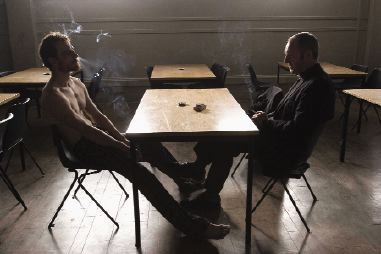Hunger

The first feature-length film by video installation artist Steve McQueen (no relation to the late actor) presents a detailed and disturbing look at conditions inside Northern Ireland’s Maze Prison in 1981. Angry members of the Irish Republican Army were jailed—some for relatively minor offenses—denied political-prisoner status and subjected to regular beatings by British guards. Hunger also chronicles the last days of Bobby Sands (Michael Fassbender, in a chilling performance), the IRA leader whose frustrations with conditions inside and outside the prison prompted him to stage a hunger strike—which eventually led to his death.
Hunger is less a documentary and more a form of impressionism. It relies on potent visuals, extremely long takes and select shots framed like paintings to convey the sensory overload and emotional chaos of the prison. It was a brave decision to remove the expository element. This approach does more than provide a kick to the gut. It forces us to realize that while the story is about Northern Ireland, issues of torture and resistance, violence and revenge, resonate far beyond that conflict.
McQueen makes this point abundantly clear during an audacious 20-minute dialogue scene between Sands and Father Dominic Moran (Liam Cunning ham), an acid-tongued Catholic priest who is torn between his sympathies for the IRA and his responsibilities to the church. During this extended talk, in which the camera barely moves, the two men chat about soccer and the old neighborhood before moving into political and spiritual territory. Issues of nationalism and sovereignty come up, along with protest, rebellion and the role of a man of peace in violent times.
But only when Sands reveals his plan to starve himself in hopes of drawing attention to the IRA cause does the dialogue soar. As penned by Irish playwright Enda Walsh, the discussion centers on issues of false pride, needless sacrifice and the morality of identifying what God’s role is in the conflict.
The performances are spot on, right down to the subtle reaction shots of the two men. The dialogue is skillfully detailed, allowing for moments of levity, and it gives us insight into the stoic Sands, his childhood, and what led him into the IRA.
Viewers are happy to sit through this barrage of words because almost everything that comes before this scene is stripped clean of unnecessary language. After repeated shots of the prisoners’ urine flowing down the hallway in protest, of feces smeared on the walls of cells, and of naked bodies dragged across the ground as punishment, we welcome a discussion that makes some sense of the chaos.
Whereas the first act shows us daily prison life and the second act offers philosophical dialogue, the third focuses on the slow deterioration of Sands’s body. (Production ceased on the film for two months to allow Fassbender to lose weight.) As he wastes away, his body accumulating sores and his faculties weakening by the day, we get a glimpse into the childhood that was alluded to in the dialogue with Father Moran.
The film goes over the top in comparing Sands’s story to Jesus’ passion, but McQueen doesn’t fetishize Sands’s slow death as much as dissect it. Especially powerful is the final realization that “the Troubles” continued for years after Sands’s death. We can’t help wondering whether the smart and savvy Sands could have been a key player in resolving the conflict rather than a martyr to the IRA cause.





